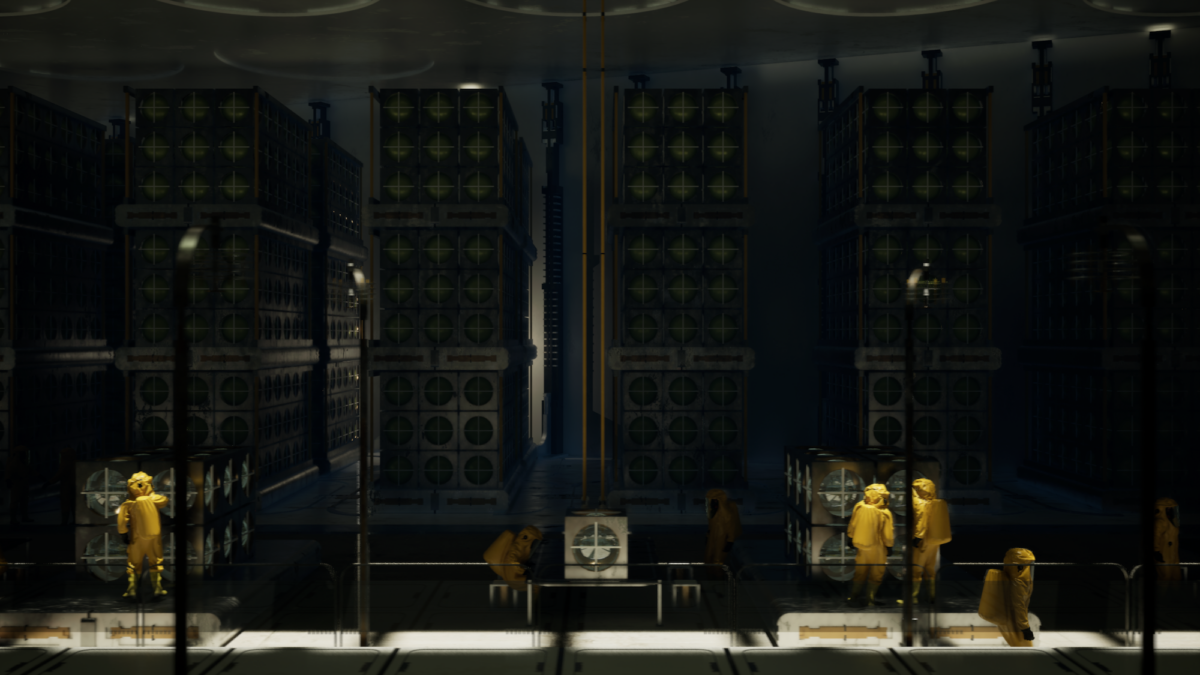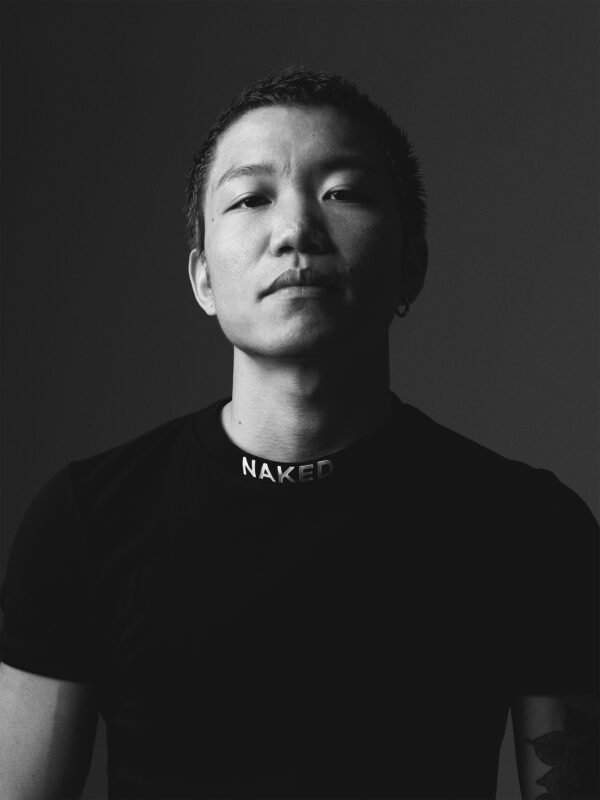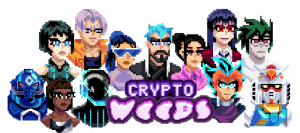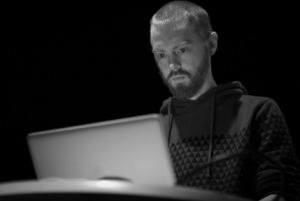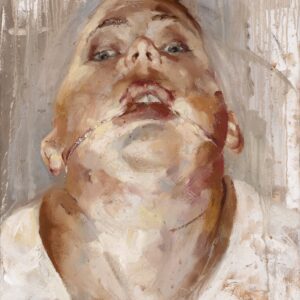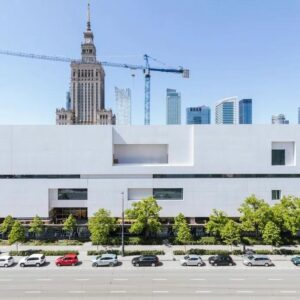Jiayi Lin is a digital artist based in London. Jiayi’s digital artworks deeply reflect on the complex relationship between cultural heritage, social critique, and future imagination within contemporary art. His work integrates futurism, postmodernism, and semiotic theory, creating an artistic style that is both socially conscious and highly experimental.
From the perspective of artistic movements, Jiayi’s work clearly embodies a fusion of futurism and postmodernism. By utilizing advanced 3D modeling and digital animation techniques, he presents a visually striking world infused with futurism and technological aesthetics. However, unlike traditional futurism’s optimistic outlook on technology, his work expresses deeper concerns about the social conflicts and ethical dilemmas that technological advancements may bring. This critical attitude toward the future gives his work distinct postmodernist characteristics, namely a deep skepticism and critique of modern society and technological rationality.
The use of semiotics is particularly prominent in Jiayi’s work. He skilfully conveys deep cultural and social meanings through specific visual symbols. In HYPOXIA, Jiayi Lin adopts an industrial aesthetic, employing precise geometric structures and a cold colour palette to reinforce a critical commentary on capitalism’s exploitation of natural resources. The industrialization, standardization, and coldness in form are not just artistic choices but serve as a metaphorical critique of the extreme commodification of contemporary society. The towering oxygen tanks, production lines, and enclosed industrial settings in the artwork serve as visual symbols of capitalist logic, revealing the harsh reality of life-sustaining resources being commodified and controlled by capital, further deepening the work’s social critique.
Jiayi’s Phenomenon of Fireworks places semiotic theory at the centre of a profound examination of traditional rituals and contemporary digital expression. In the artwork, fire is not merely a representation of Yi beliefs and rituals but also a multifaceted symbol that bridges historical memory and contemporary experience. The artwork skillfully recreates the collective cohesion and cultural identity embodied in the traditional Torch Festival through dynamic digital imagery and installation media. The particle flames composed of digital 0s and 1s symbolize the essence of information in the digital age and the virtualization of culture, highlighting the tension between traditional rituals and digitization. As the flames transform into Yi script, they reflect the self-redefinition of cultural symbols in shifting contexts. This process of symbolic transformation not only underscores the fluidity and ambiguity of meaning in transmission but also highlights the profound impact of digital media on the formation of cultural symbols.
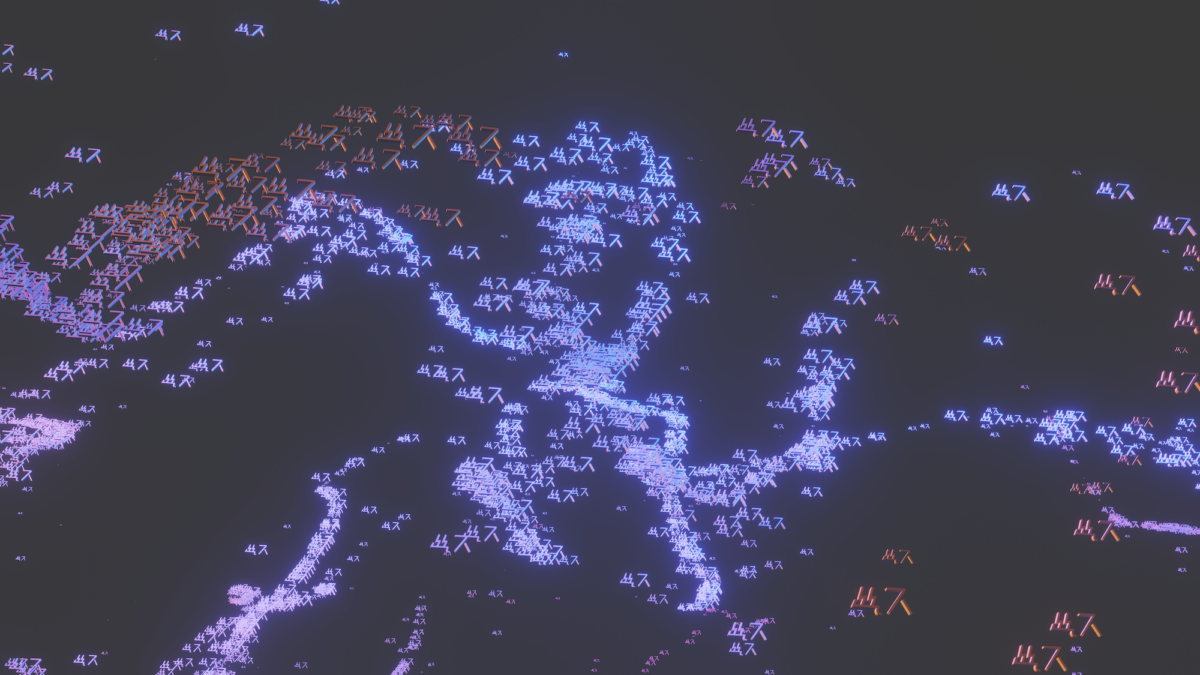
In The Buckwheat Has Bloomed, he deconstructs and reconstructs key symbols from the Yi creation epic ‘Meige’—such as the cosmos, fire, water, and buckwheat flowers—within a digital landscape. In this context, “fire” is no longer merely a natural phenomenon but a symbol of power, destruction, and rebirth. The “cosmos,” in contrast, symbolizes a broader concept of life and time. “Water” symbolizes fluidity and transformation. The “buckwheat flower,” in turn, becomes a symbol of cultural identity and traditional memory, re-encoded in the digital space, suggesting that cultural transformation is no longer solely dependent on oral tradition and text but can be reproduced through digital media. This reinterpretation of traditional symbols allows Buckwheat Flowers in Bloom to explore the digitization of cultural heritage while also sparking discussions on the tension between cultural preservation and commodification.
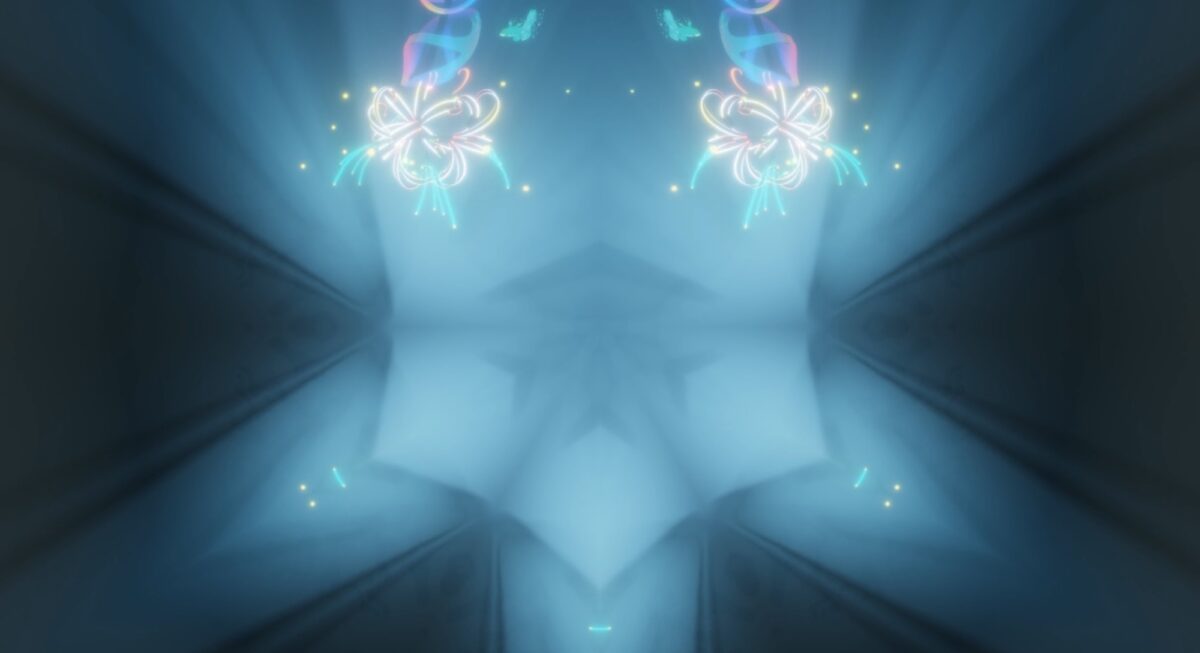
In The Five Seasons of the Universe, Jiayi further applies semiotic theory to explore the dialogue between the Yi people’s traditional concept of time and modern cosmological theories. He takes the rotation of the Big Dipper as the visual centrepiece, with the continuous motion of the constellation symbolizing the passage and cyclical nature of time, revealing the Yi people’s profound understanding of the universe and natural phenomena. The alternation between grayscale and color imagery in the work not only creates a striking visual contrast but also, on a semiotic level, conveys the tension between time and space, memory and forgetting. The use of abstract lines further enhances the visual expressiveness of the composition; though chaotic, they intertwine with a sense of order, metaphorically representing the collision and fusion of different knowledge systems. In this way, The Five Seasons of the Universe goes beyond merely reproducing cultural symbols, instead presenting a complex scene of cross-cultural and interdisciplinary interaction. It reflects the artist’s in-depth exploration and critical reflection on how traditional knowledge adapts to and integrates into the modern scientific context.
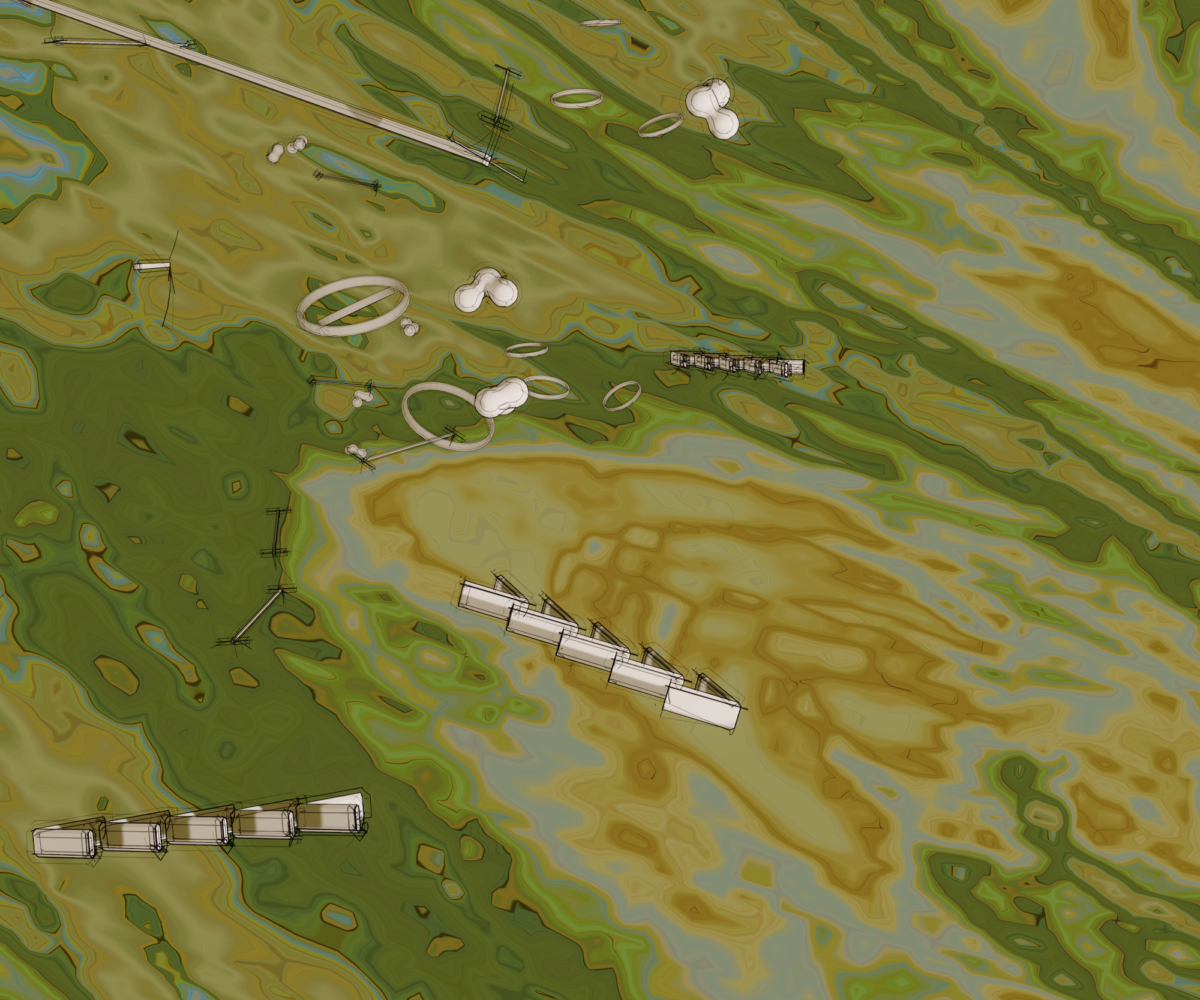
From a formal analysis perspective, Jiayi’s digital art exhibits uniqueness in visual composition, colour application, and dynamic expression. His works often employ a highly formalized visual language, such as the interaction between a mechanical hand and soft fabric in Blue 2054, where the high-saturation colors create a distinct visual tension. This formal contrast and unity not only enhance the visual expressiveness of the work but also emphasize the surreal nature of the virtual world, strengthening the emotional resonance between the audience and the artwork while metaphorically alluding to the complexities of human relationships.
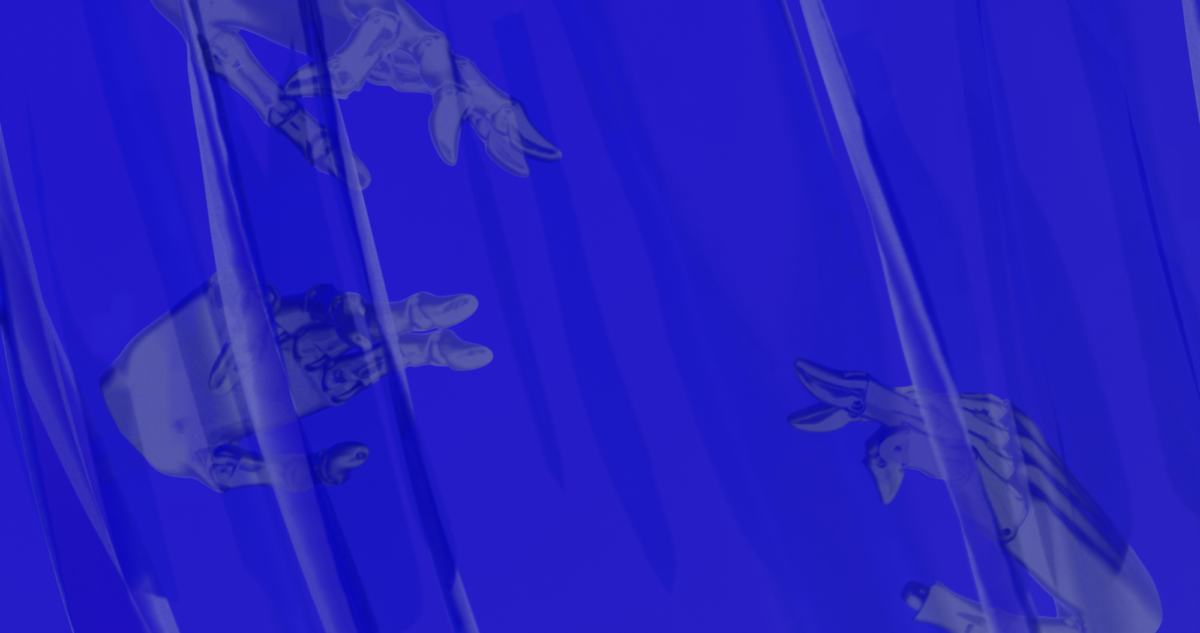
Jiayi’s digital artworks merge futurism and postmodernism, creating an art style that is both visually striking and critically engaging. He applies semiotic theory to deeply explore the social and philosophical meanings behind cultural symbols, while using formal analysis to enhance the emotional expression and conceptual communication of his work. His work reflects the keen observation and deep reflection of contemporary digital artists when confronting technological change, cultural conflicts, and social ethical challenges.
Jiayi does not simply create a visual collage of traditional culture and futuristic technology; instead, through in-depth semiotic exploration and formal experimentation, he successfully constructs a visual narrative space that provokes deep thought and reflection in the audience. His work consistently situates art within the context of real-world social issues, attempting to offer a new perspective on contemporary societal challenges through virtual futuristic landscapes. His work embodies a systematic approach to speculation and practice. This cross-disciplinary artistic creation not only enriches the expressive forms of digital art but also offers a profound and thought-provoking cultural critique of contemporary society. Through his artistic exploration, he has successfully created a meaningful connection between traditional culture and modern technology, allowing the audience to re-examine and reflect on our present reality within imagined future landscapes.
